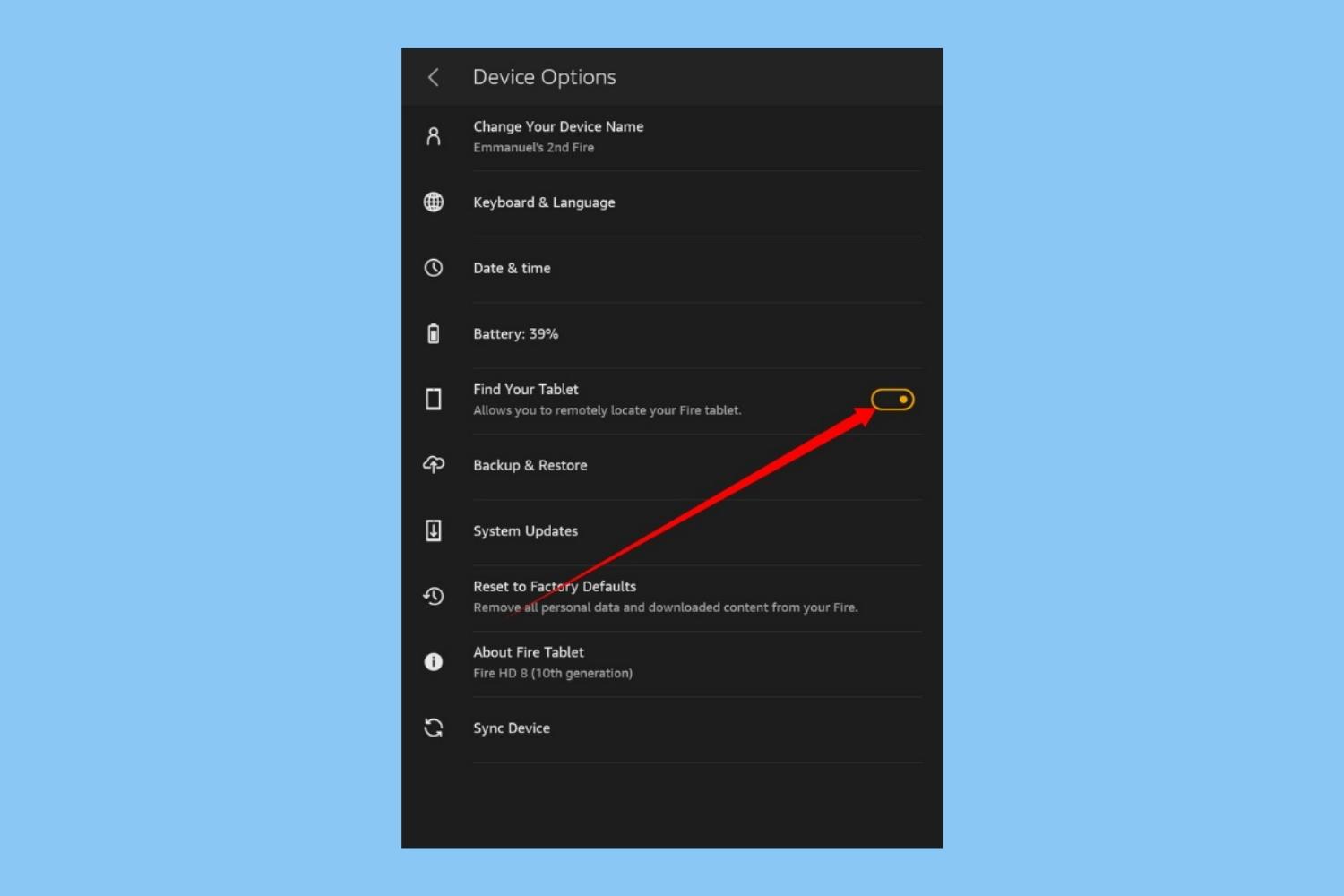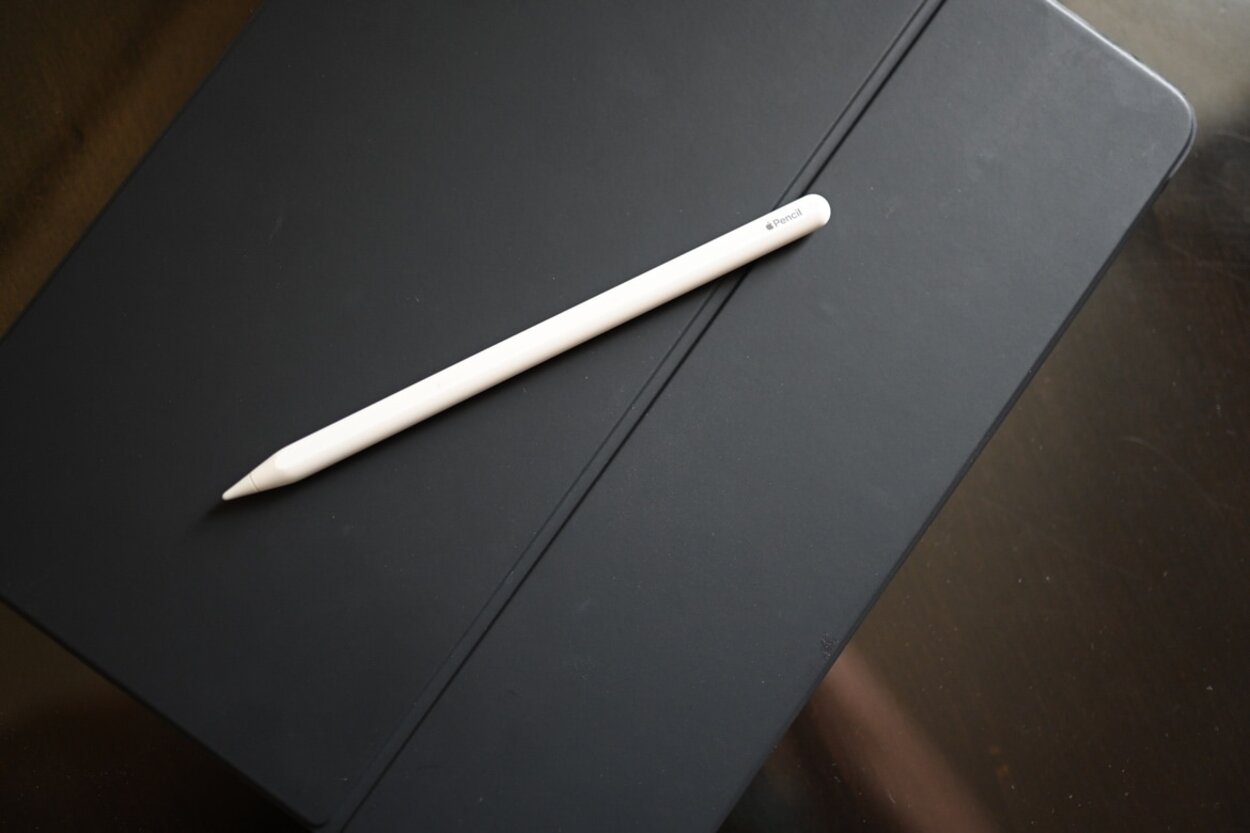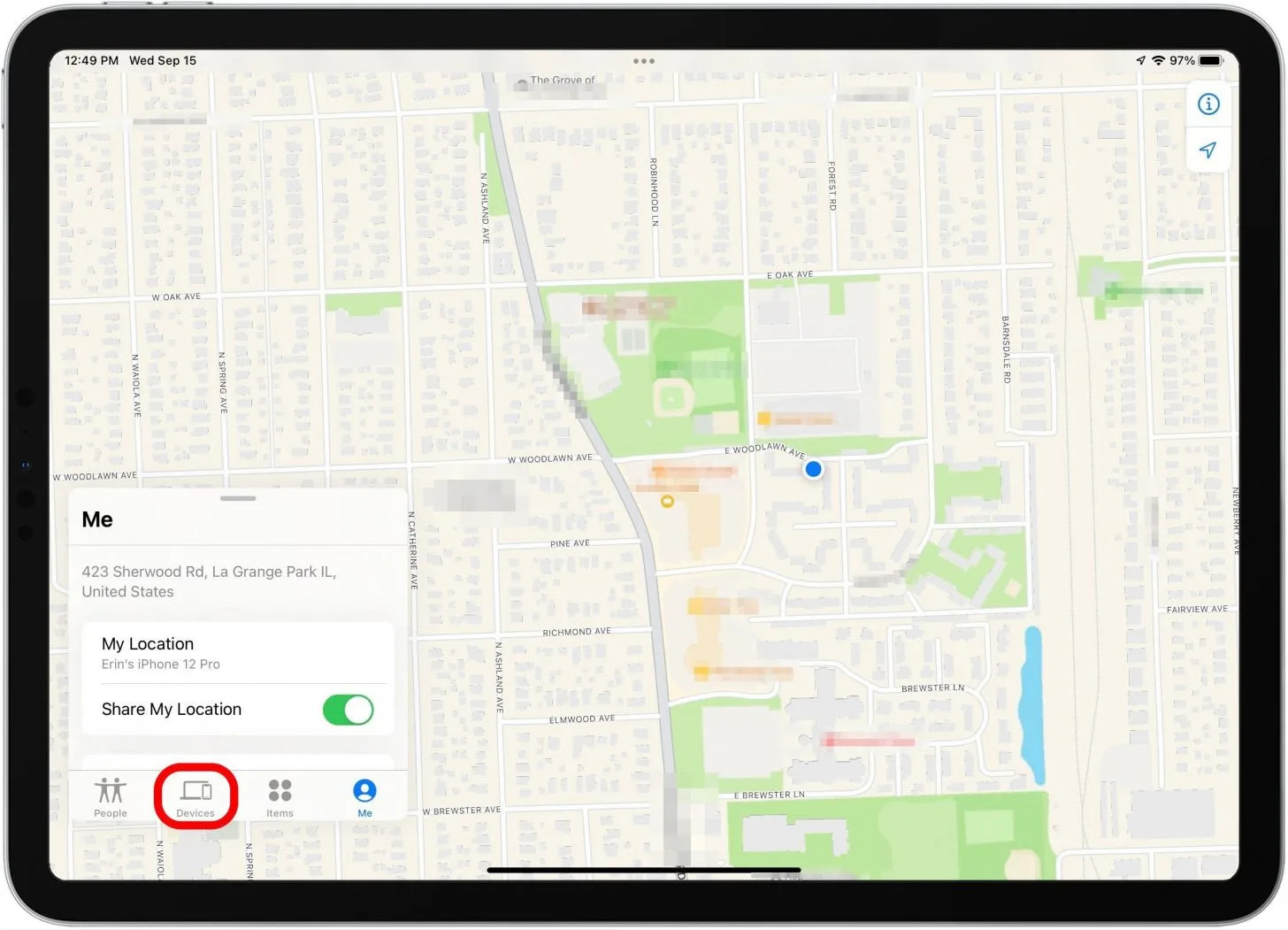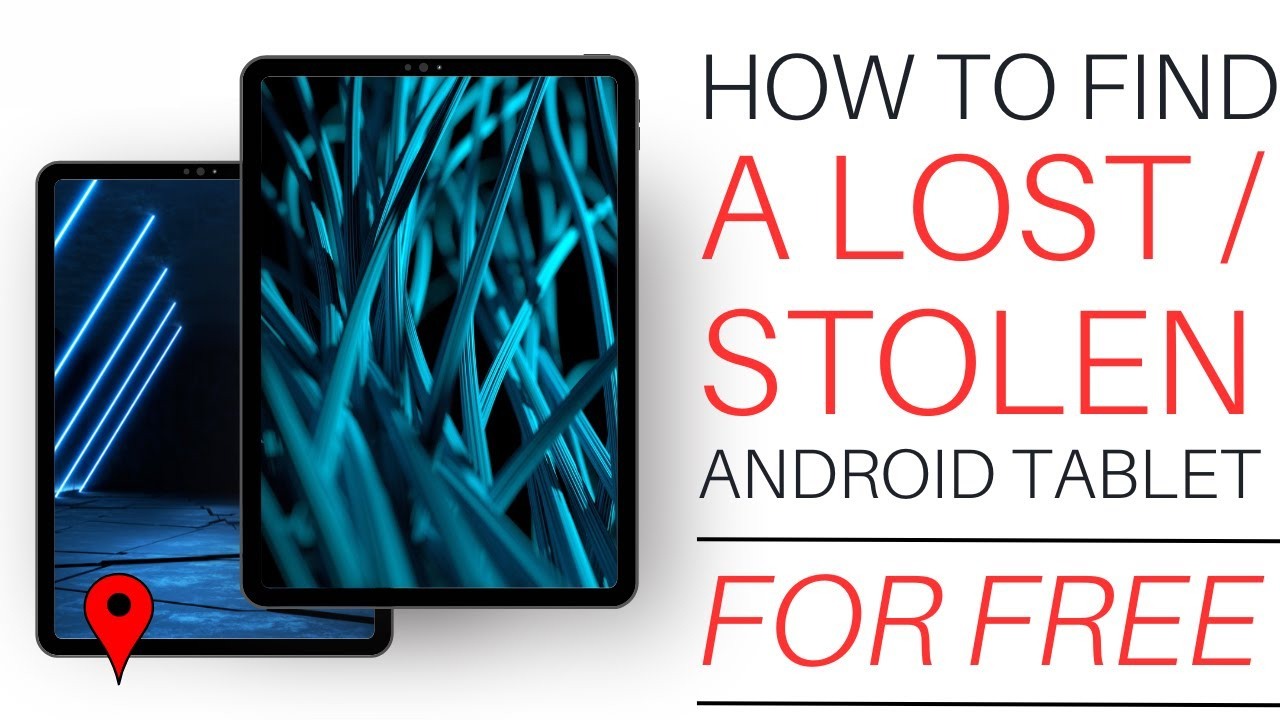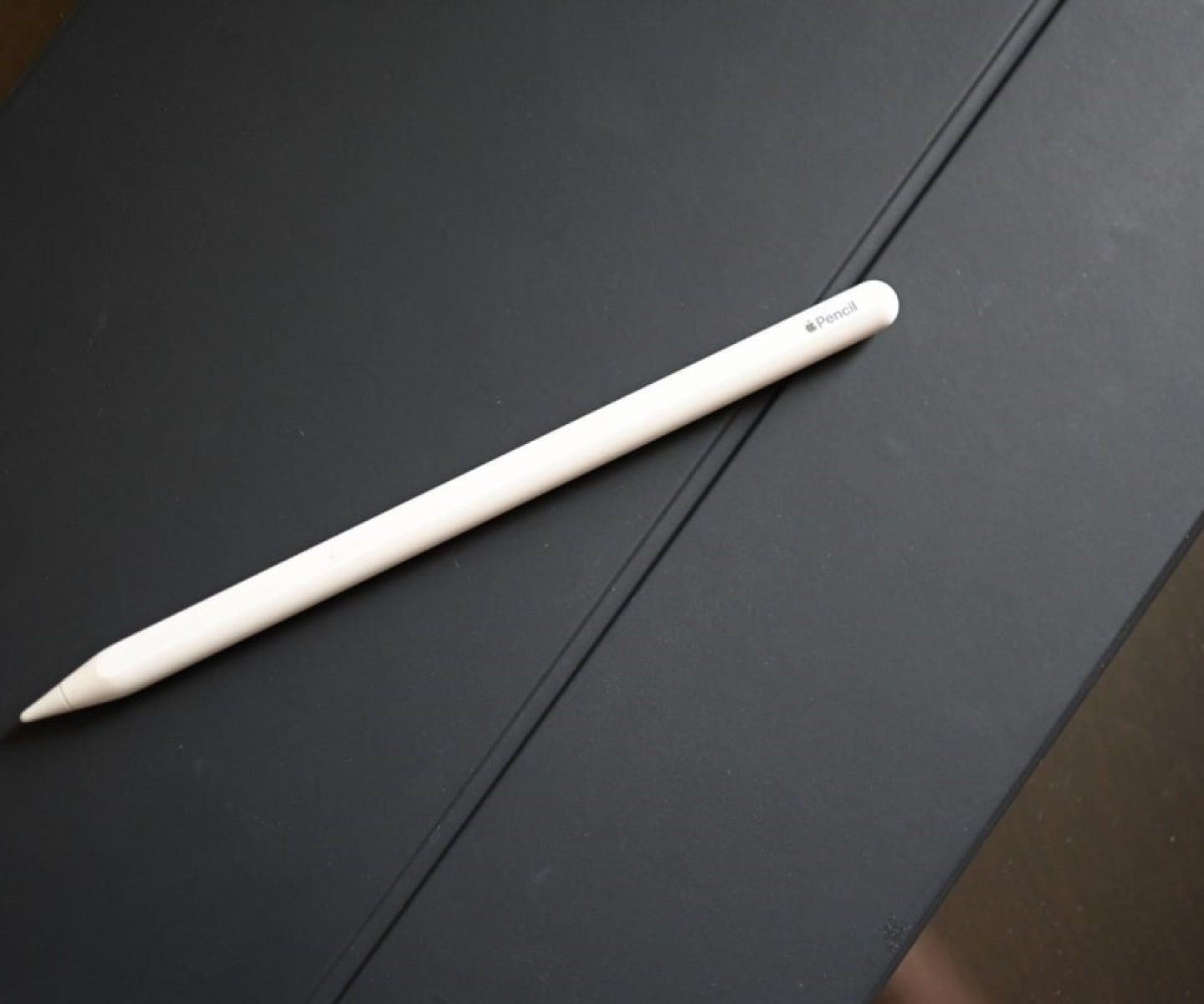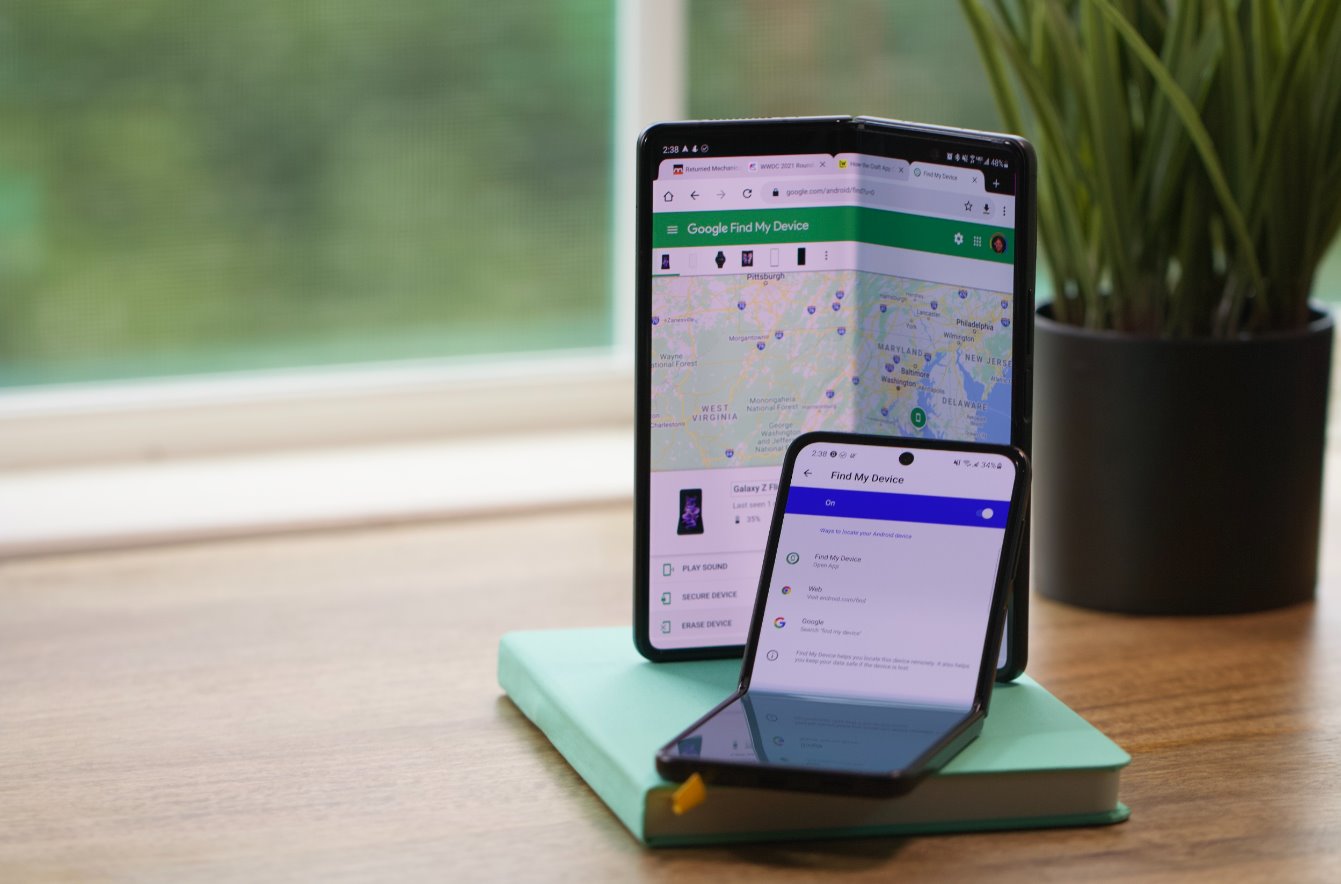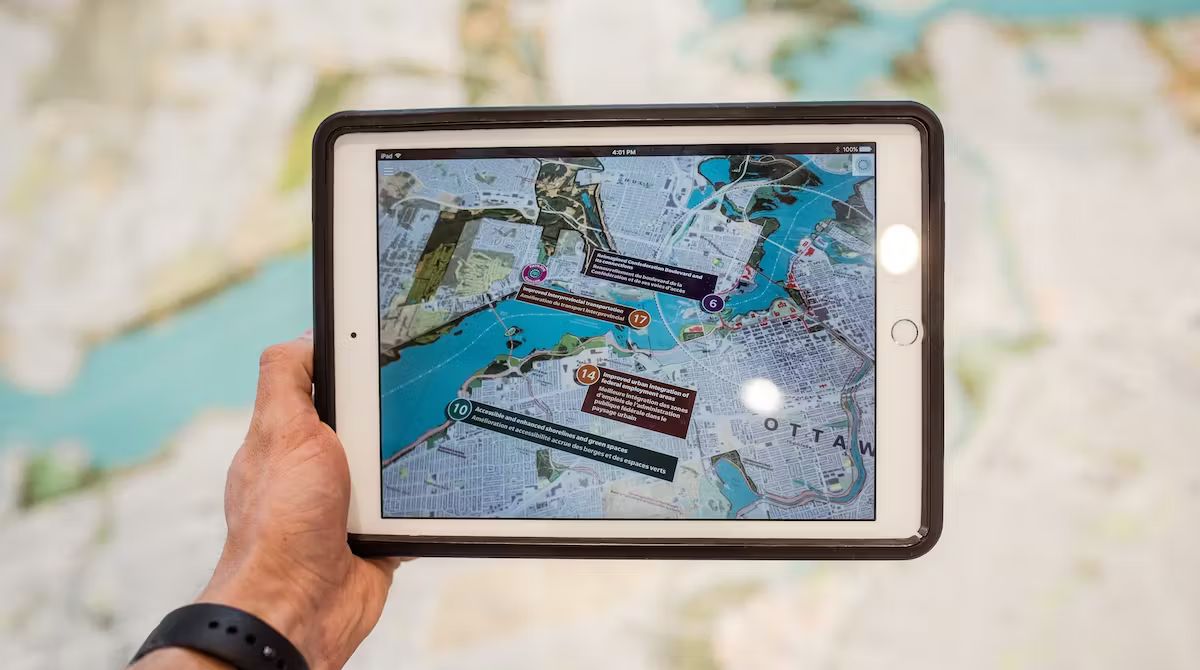Introduction
Losing a tablet can be a stressful and frustrating experience. Whether it’s misplaced at home or stolen while out and about, the thought of losing valuable data, personal information, and the device itself can be concerning. Fortunately, there are several methods available that can help you locate a lost tablet and provide peace of mind.
In this article, we will explore various techniques you can use to find a lost tablet. From tracking applications to built-in device features, we will discuss different options that can assist you in locating your missing device.
Please note that the effectiveness of these methods may vary depending on factors such as device type, operating system, and location services. It’s always recommended to have preventive measures in place, such as regularly backing up your data and enabling device tracking features in advance, to increase your chances of finding a lost tablet.
Now, let’s delve into the different methods you can employ to locate your lost tablet and increase the likelihood of recovering it.
Methods to Locate a Lost Tablet
When it comes to finding a lost tablet, there are various methods you can use to track its whereabouts. From using device tracking features to leveraging external applications, here are some effective ways to locate a lost tablet:
- Find My Device or Find My iPhone: If you have an Android tablet, you can use the “Find My Device” feature, whereas Apple users can utilize “Find My iPhone.” These built-in tracking services allow you to locate your device’s approximate location on a map, play a sound to help you find it nearby, and even remotely lock or erase the device to protect your data.
- Google Maps Timeline: If you have location history enabled on your tablet, you can check your Google Maps Timeline. This feature provides a detailed record of your device’s movements, allowing you to backtrack and pinpoint where you might have left it.
- Tracking Applications: There are several third-party tracking applications available for both Android and iOS devices. These apps allow you to remotely locate your tablet, track its movements, and even secure it with additional features like locking or wiping the device.
- Bluetooth Trackers: If you frequently misplace your tablet at home or in a small area, you can consider using Bluetooth trackers. These small devices can be attached to your tablet, and you can use a corresponding smartphone app to track the location of the tracker and your tablet.
- Contact Your Service Provider: Reach out to your tablet’s service provider and provide them with your device’s unique identification number, such as the IMEI or serial number. They may be able to track the last known location of your tablet through their network records or assist you with additional steps to recover your device.
- Use Social Media: Utilize your social media accounts to spread the word about your missing tablet. Post a description, picture, and relevant details to seek assistance from your friends, followers, and local community. Sometimes, someone may come across your tablet and reach out to help you retrieve it.
- Inform Local Authorities: If you suspect your tablet has been stolen, it’s crucial to report the incident to the local authorities. Provide them with all the necessary details and any evidence you may have, such as the device’s serial number or tracking information. They can assist you in investigating the matter and increasing the chances of recovering your tablet.
- Contact Friends and Family: Reach out to your close contacts and inform them about the lost tablet. They might have seen or found it or may know someone who has. Networking and keeping others informed can expand your reach and aid in the recovery process.
- Utilize Built-in Tracking Features: Some tablets come with built-in tracking features, such as Samsung’s “Find My Mobile” or Microsoft’s “Find My Device.” Make sure to enable these features on your device in advance, so you can leverage them when needed to locate your tablet.
By following these methods and staying proactive, you can increase your chances of locating a lost tablet and potentially recovering it.
Find My Device or Find My iPhone
If you have an Android tablet, you can take advantage of the “Find My Device” feature, while Apple users can rely on “Find My iPhone.” These built-in tracking services can be lifesavers when it comes to locating a lost tablet.
With Find My Device or Find My iPhone, you can log in to the respective service using your Google or Apple account credentials on another device. Once signed in, you’ll be able to see your lost tablet’s last known location on a map, providing you with a general idea of where it might be located.
If your tablet is nearby but you can’t seem to locate it, you have the option to play a sound that will ring your tablet at maximum volume. This can be particularly helpful if your tablet is hiding in a couch cushion or under a pile of papers.
In more extreme cases where you suspect your tablet has been stolen or you have concerns about your data security, you can use the tracking service to remotely lock or erase your tablet. This ensures that even if the device is in someone else’s possession, your personal information remains secure.
It’s important to note that to use Find My Device or Find My iPhone, you need to have these services enabled on your tablet before it gets lost. Make sure to check your device’s settings and ensure that location services and tracking features are turned on. This way, you’ll be prepared in case the unfortunate happens.
Additionally, it’s crucial to remember your Google or Apple account credentials to log in to the respective service. If you haven’t already, consider enabling two-factor authentication for added security.
Find My Device and Find My iPhone are powerful tools that can greatly increase your chances of recovering a lost tablet. By leveraging these tracking services, you can locate your device on a map, play a sound to find it, and even take necessary actions to protect your data.
Google Maps Timeline
If you have location history enabled on your tablet, you can use Google Maps Timeline to help locate your lost device. Google Maps Timeline provides a detailed record of the places you have visited, including timestamps and locations.
To access Google Maps Timeline, you can open the Google Maps app on your smartphone or computer. Sign in with the Google account associated with your tablet and access the Timeline feature. You will be able to see a visual representation of your tablet’s movements over a specific period of time.
By examining your Timeline, you may be able to identify the last-known location of your tablet. This can be particularly useful if you can’t remember where you left it or if you suspect you might have left it at a specific location, such as a café or a friend’s house.
If a specific location stands out as the most likely place where your tablet was last used or seen, you can focus your search efforts in that area. You can revisit the location or reach out to the establishment or person who was with you at the time to inquire if they have seen or found your tablet.
It’s important to note that Google Maps Timeline relies on having location history enabled on your tablet. To ensure that this feature is activated, you can check your device’s location settings. Keep in mind that you may need to have location services enabled and be signed in to your Google account for the Timeline to accurately record your tablet’s movements.
By utilizing Google Maps Timeline, you can gain valuable insights into your tablet’s recent whereabouts. This information can aid you in narrowing down potential locations and increase your chances of finding your lost tablet.
Tracking Applications
When it comes to locating a lost tablet, third-party tracking applications can be valuable tools. These applications are specifically designed to help you track and locate your device remotely.
There are numerous tracking applications available for both Android and iOS devices. Some popular options include apps like Find My Device, Prey Anti-Theft, Cerberus, and Find My iPhone. These apps offer features such as real-time tracking, location history, remote device locking, and even the ability to capture photos or sound recordings from the device.
To use a tracking app, you typically need to install it on your tablet before it goes missing. Once installed, you can log in to the app from another device or computer to access the tracking features. The app will provide you with information about your tablet’s location, and some apps even offer additional features like geofencing, which can alert you if your tablet enters or leaves a specific area.
It’s important to note that most tracking apps require you to set up an account and configure the app’s settings properly to ensure accurate tracking. Some may have subscription fees for access to advanced features or to track multiple devices.
In case your tablet goes missing, you can log in to the tracking app’s website or use another device with the app installed to track its location. This can be particularly helpful if your tablet is moved or stolen and you want to keep tabs on its whereabouts.
Furthermore, many tracking apps offer additional security features such as remotely locking your device or even wiping its data to protect your personal information. These features can provide peace of mind, knowing that your data is safeguarded even if the physical device cannot be recovered.
Remember to check the reviews, ratings, and reputation of the tracking app before installing it on your tablet. It’s also a good idea to stay updated with the latest versions of the app to ensure optimal functionality and compatibility with your device.
By utilizing tracking applications, you can have an extra layer of security and peace of mind knowing that you have the tools to locate and protect your lost tablet.
Bluetooth Trackers
If you often misplace your tablet within a small area, like your home or office, Bluetooth trackers can be an effective solution to help you locate your lost device.
Bluetooth trackers are small devices that can be attached to your tablet or placed in its case. These trackers work in conjunction with a corresponding smartphone app. When your tablet goes missing, you can use the app to track the location of the Bluetooth tracker, which in turn helps you determine the whereabouts of your tablet.
Once you open the app, it will display the approximate distance between your smartphone and the Bluetooth tracker. This can guide you in deducing whether the tablet is nearby or further away. Some trackers even provide audio and visual cues to help you pinpoint the exact location of the device.
The range of Bluetooth trackers can vary, typically ranging from around 30 to 200 feet. Therefore, it’s important to consider the range limitations when using Bluetooth trackers. These trackers are most effective in close proximity scenarios, making them ideal for finding a misplaced tablet within a confined area.
Bluetooth trackers are relatively inexpensive and widely available in the market. Popular brands include Tile, TrackR, and Chipolo. There are also options with additional features like replaceable batteries and water-resistant designs.
Keep in mind that Bluetooth trackers rely on the connection and communication between your tablet and your smartphone. Therefore, it’s crucial to have Bluetooth and location services enabled on both devices. Additionally, make sure to keep the tracker’s battery charged to ensure continuous operation and accurate tracking.
Bluetooth trackers are a handy tool for finding a lost tablet within a limited range. They can save you time and frustration by quickly leading you to the general area where your device is located, making them especially useful for finding your tablet in everyday scenarios.
Contact Your Service Provider
If you’ve been unable to locate your lost tablet using other methods, reaching out to your tablet’s service provider can be a helpful step in the recovery process. Your service provider may have access to certain resources and tools that can aid in locating your device.
Contact your service provider’s customer support and provide them with the necessary information about your lost tablet, such as the device’s unique identification number (IMEI or serial number). They can track the last known location of your tablet through their network records.
Service providers generally have protocols in place to assist customers in recovering lost or stolen devices. They may be able to perform a network ping to determine if the tablet is still connected to their network. This information can help narrow down the possible locations of your device.
Additionally, your service provider can guide you through the steps of suspending your account or temporarily deactivating the device to prevent unauthorized use and protect your personal data. They can also provide you with information about insurance coverage or potential replacement options.
It’s important to initiate this process as soon as possible after realizing your tablet is lost or stolen. The sooner you contact your service provider, the higher the chances of successful recovery or prevention of unauthorized activities on your account.
Remember to have your account details and the necessary identification information readily available when contacting your service provider. This will help expedite the process and ensure that they can assist you effectively.
While contacting your service provider may not guarantee the recovery of your tablet, it is still worth reaching out to them as they have procedures in place to provide support and potentially track your device.
Use Social Media
Social media platforms can be powerful tools for spreading the word about your lost tablet and enlisting the help of others in locating it. By leveraging your social network, you can increase the chances of someone coming across your tablet or providing valuable information that can aid in its recovery.
Start by posting a detailed description of your lost tablet on your social media accounts, including any distinguishing features, the make and model, and the approximate date and location where it was last seen. Consider attaching a clear photo of the tablet to the post to help others identify it accurately.
Urge your friends, followers, and the wider social media community to share your post. The more people who see it, the higher the likelihood of reaching someone who may have come across your tablet or knows someone who has.
Tag local businesses, organizations, and community pages in your post. They may have a larger reach within your specific area, increasing the chances of someone spotting your tablet and contacting you with information.
Additionally, you can join local classified groups or lost and found groups on social media platforms. These groups often have members who actively look out for lost items and share information about found items. Engage with these groups by posting about your lost tablet and asking for their assistance in locating it.
Monitor your social media accounts regularly for any notifications, comments, or direct messages that could provide leads on the whereabouts of your tablet. Respond promptly to anyone who reaches out with potential information or sightings.
Be cautious when sharing personal information on social media and avoid disclosing too many details that could compromise your privacy or the security of your tablet.
Remember to express gratitude and appreciation to those who share your post or provide assistance in your search. Keeping the community engaged and informed can increase the chances of someone coming forward with valuable information.
Social media platforms have the ability to mobilize communities and extend the reach of your search efforts, making them a valuable tool in the quest to locate your lost tablet.
Inform Local Authorities
If you believe your tablet has been stolen or you have exhausted other options without success, it may be necessary to involve the local authorities in your efforts to locate your tablet.
Report the loss or theft of your tablet to the local police department. Provide them with all the relevant details, including the make and model of the tablet, any identifying marks or serial numbers, and the circumstances surrounding the loss or theft. This information will aid them in their investigation and increase the chances of recovering your tablet.
It’s important to file a police report as soon as possible after realizing your tablet is missing or has been stolen. This helps establish a record of the incident and provides a starting point for any subsequent investigation.
If you had any tracking features enabled on your tablet, such as Find My Device or tracking apps, share this information with the authorities. They may be able to use this data to track the device or identify potential suspects.
Cooperate fully with the authorities during their investigation. Provide them with any additional information or evidence that may help in locating your tablet. This can include any emails, messages, or other communication related to the tablet’s loss or theft.
Remember to stay vigilant and keep the police updated with any developments or new information that may arise. It’s also a good idea to maintain copies of your police report and any correspondence with the authorities for future reference.
While the involvement of local authorities may not guarantee the immediate recovery of your tablet, it serves as an important step in reporting the incident, ensuring the proper documentation is in place, and possibly aiding in the recovery process.
Contact Friends and Family
Your friends and family can be a valuable resource in your quest to locate a lost tablet. Reach out to them and let them know about the situation, providing details about your lost tablet and any relevant information that might aid in its recovery.
Start by contacting those who were with you or around you when the tablet was last seen. They may have noticed something or have useful information that can help narrow down the search area.
Ask your friends and family to keep an eye out for the tablet and to let you know if they come across any potential leads or sightings. They can also spread the word within their own networks, increasing the chances of someone recognizing the tablet or hearing about someone who has found it.
Consider asking your contacts to share your post on social media or to help you in contacting local businesses, organizations, or community groups that might be able to assist in the search.
If you have a large social circle or belong to multiple communities, consider organizing a search party. Coordinate with your friends and family to conduct a thorough search of the areas where you suspect the tablet might have been lost or left behind.
Stay in regular communication with your loved ones, updating them on any progress or developments in your search. This ensures that everyone is aligned and working together to help locate your lost tablet.
Remember to express your gratitude for their support and assistance. Acts of kindness and helpful gestures can go a long way in rallying your loved ones around the search effort.
By reaching out to your friends and family, you tap into a network of people who care about your well-being and want to help. Their collective efforts and connections can significantly increase the chances of finding your lost tablet and bringing it back to you.
Utilize Built-in Tracking Features
Many tablets come equipped with built-in tracking features that can be invaluable in the search for a lost device. These features are designed to help you track, locate, and potentially recover your tablet.
Depending on your tablet’s operating system and brand, there may be various built-in tracking options available. For example, Samsung devices have “Find My Mobile,” Microsoft devices have “Find My Device,” and Apple devices have “Find My iPhone.”
To utilize these built-in tracking features, you typically need to enable them on your tablet before it goes missing. This can usually be done through the device’s settings or security options.
Once enabled, you can use a web browser or a dedicated app to access the tracking feature. By logging in with your account credentials, you can locate your tablet on a map or even trigger actions like playing a sound, remotely locking the device, or erasing its data to protect your personal information.
These tracking features often work in conjunction with GPS or location services to provide accurate information about the tablet’s whereabouts. It’s important to keep in mind that the effectiveness of these features may depend on factors such as the tablet’s battery life, internet connectivity, and location accuracy.
If you set up a new tablet or reset your existing one, make sure to enable these tracking features again. It’s also a good practice to periodically check that they are still active and properly configured.
Beyond just locating your device, some built-in tracking features also offer additional functions. For example, they may allow you to display a custom message on the screen to provide contact information for anyone who finds the tablet, increasing the chances of its safe return.
By leveraging the built-in tracking features of your tablet, you can tap into its built-in capabilities to locate and potentially recover your lost device. These features are designed to give you more control over the security and whereabouts of your tablet, providing peace of mind in the event of loss or theft.
Conclusion
Losing a tablet can be a distressing experience, but with the right tools and strategies, you can increase your chances of locating and recovering your device. In this article, we explored various methods to help you find a lost tablet.
We discussed the importance of using built-in tracking features such as Find My Device or Find My iPhone, as well as leveraging Google Maps Timeline to retrace your tablet’s movements. Tracking applications and Bluetooth trackers were also highlighted as effective tools for remotely tracking and locating your lost tablet within close proximity.
Additionally, we emphasized the significance of contacting your service provider, informing local authorities, and utilizing the power of social media and personal connections to widen the scope of your search efforts. Leveraging these resources can provide additional support and increase the chances of someone coming across your tablet or providing valuable information.
It is worth remembering that prevention is key to avoiding the loss of your tablet. Regularly backing up your data, enabling tracking features, and practicing good device security habits can help minimize the impact of a lost device and aid in its recovery.
When faced with a lost tablet, it’s crucial to remain calm and act swiftly. Every minute counts, and by following the methods discussed in this article, you can improve your chances of locating and recovering your device.
If all else fails and your tablet cannot be found, it is important to take measures to protect your personal information. Contact your service provider to suspend your account or remotely wipe the data on your tablet to ensure the privacy and security of your sensitive information.
Remember, the information and steps outlined here are general guidelines. The effectiveness of each method may vary depending on your specific tablet model, operating system, and location. It is always a good idea to consult the manufacturer’s instructions or seek support from relevant service providers for more tailored guidance.
By staying proactive, utilizing available resources, and enlisting the help of others, you can increase your chances of finding your lost tablet and restoring peace of mind.









